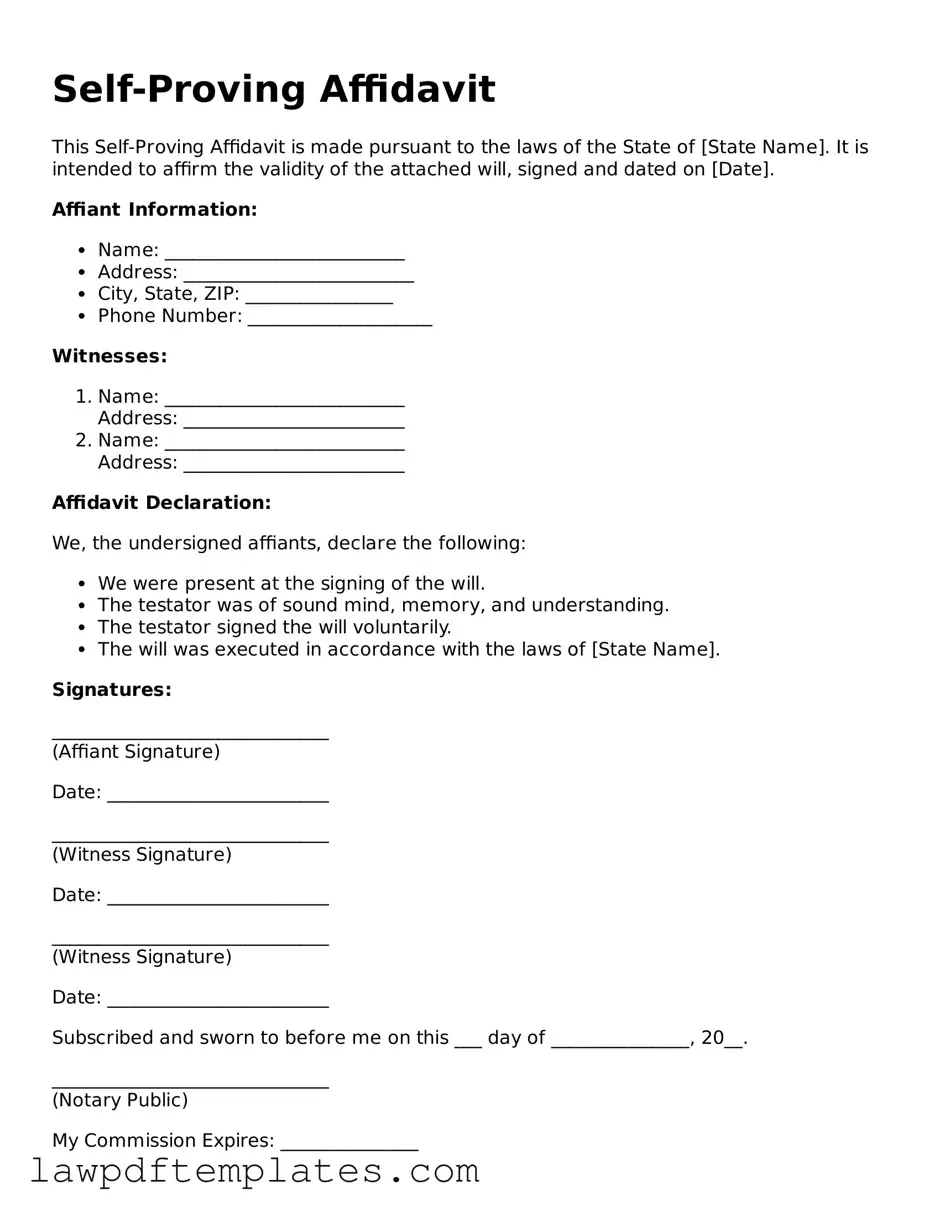Self-Proving Affidavit
This Self-Proving Affidavit is made pursuant to the laws of the State of [State Name]. It is intended to affirm the validity of the attached will, signed and dated on [Date].
Affiant Information:
- Name: __________________________
- Address: _________________________
- City, State, ZIP: ________________
- Phone Number: ____________________
Witnesses:
- Name: __________________________
Address: ________________________
- Name: __________________________
Address: ________________________
Affidavit Declaration:
We, the undersigned affiants, declare the following:
- We were present at the signing of the will.
- The testator was of sound mind, memory, and understanding.
- The testator signed the will voluntarily.
- The will was executed in accordance with the laws of [State Name].
Signatures:
______________________________
(Affiant Signature)
Date: ________________________
______________________________
(Witness Signature)
Date: ________________________
______________________________
(Witness Signature)
Date: ________________________
Subscribed and sworn to before me on this ___ day of _______________, 20__.
______________________________
(Notary Public)
My Commission Expires: _______________
